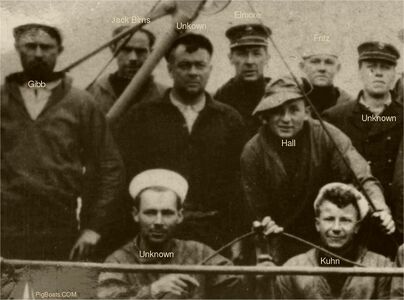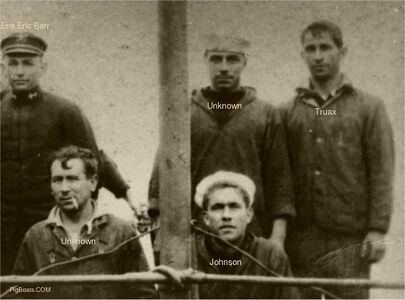E-1

Photo in the private collection of Ric Hedman
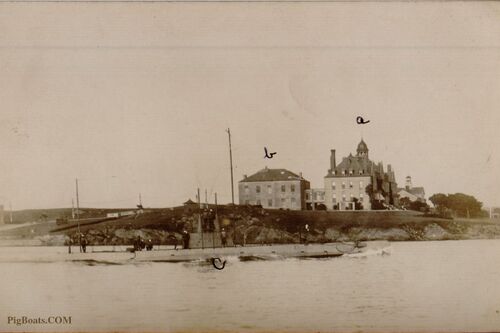
E-1 southbound in Narragansett Bay with the Naval War College in the background circa 1912. The back of this photo contains descriptions of the items in the photo that are labled with letters. "A" is the Naval War College itself. "B" is some sort of meeting hall where "a dance was held". "C" of course is the boat.
Photo in the private collection of Ric Hedman

E-1 participating in the 1912 Naval Review on October 14, 1912 in the Hudson River off New York City. The crew is "manning the rails" as they pass in review with the upper Manhattan skyline in the background.
Library of Congress photo.
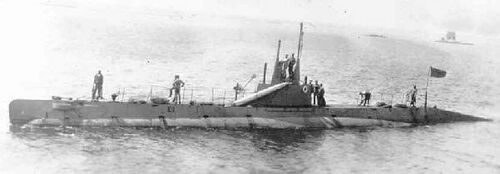
E-1 with a retrieved torpedo preparing to moor, somewhere on the U.S. east coast, circa 1914.
Photo in the private collection of Ric Hedman

This photo was taken shortly after the one above and shows E-1 mooring to a nest of other submarines, circa 1914. The boat preparing to receive her is one of the early K-class submarines.
Photo in the private collection of Ric Hedman

E-1 on a yet to be identified body of water. A few guesses can be made as to the location. The submarine may be off Provincetown, Massachusetts where the Navy kept a measured mile course for trials, but the location may also be Long Island Sound, Narragansett Bay, or Buzzards Bay. It is some place with long and low coastlines with few houses. Midway between the stern and the photos right edge a large square building sits on top of the land horizon. The land extends from side to side in the photo only to disappear behind the point on the left with a few houses. The photo looks to be taken from a ship of some kind. A pulley and davit from that vessel protrude into the photo.
The date is probably sometime between 1912 and 1915. There are corroborating photos showing the same configuration of radio antennas spanning this time frame. E-1 was one of the first subs used in proving this means of communication with submarines even to the extent of being able to receive messages underwater. The masts are held up with a complicated arrangement of stays. The antenna themselves are strung between the mast heads from spreaders.
There are six men topside. Three men forward of the conning tower fairwater, a helmsman on top of the fairwater, and an enlisted man and what looks like an officer on the aft deck. The officer looks to be wearing a long wool bridge coat. The men are in peacoats indicating that the weather is chilly and it could be anytime from fall to spring for the photo to be taken.
Photo in the private collection of Ric Hedman

The crew of the E-1 topside approximately April 1915. There are callouts on the photo giving the names of the men if they are known. They are gathered on the forward deck around the torpedo loading crane.
Photo courtesy of the Submarine Force Library & Museum.
Photos courtesy of the Submarine Force Library & Museum.


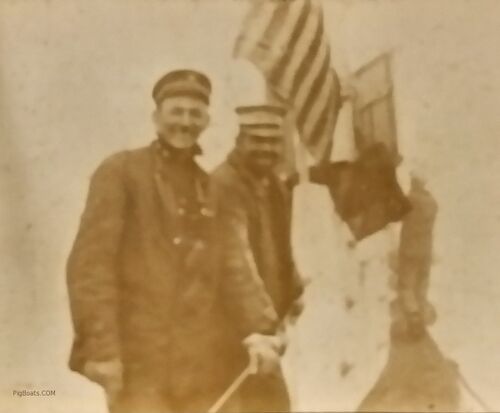


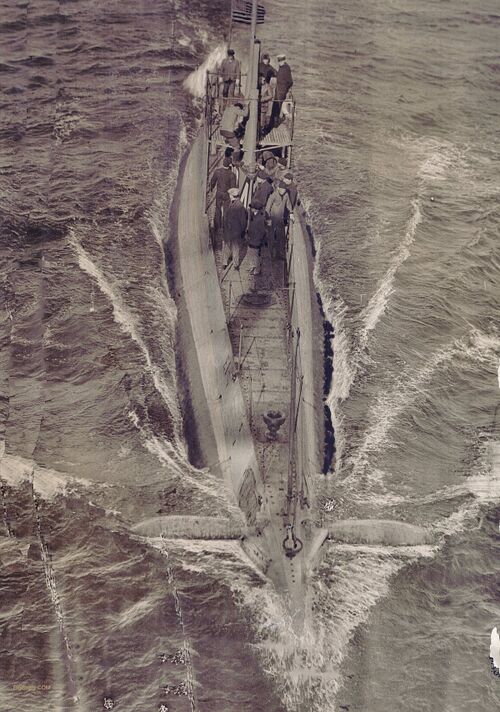
Page created by:
Ric Hedman & David Johnston
1999 - 2023 - PigBoats.COM©
Mountlake Terrace, WA, Norfolk, VA
webmaster at pigboats dot com

